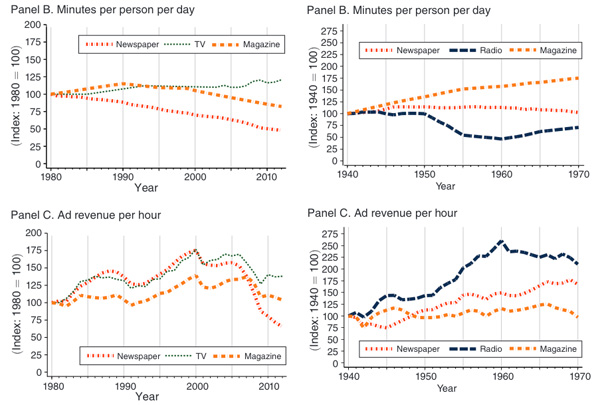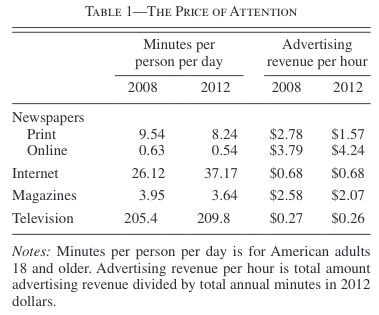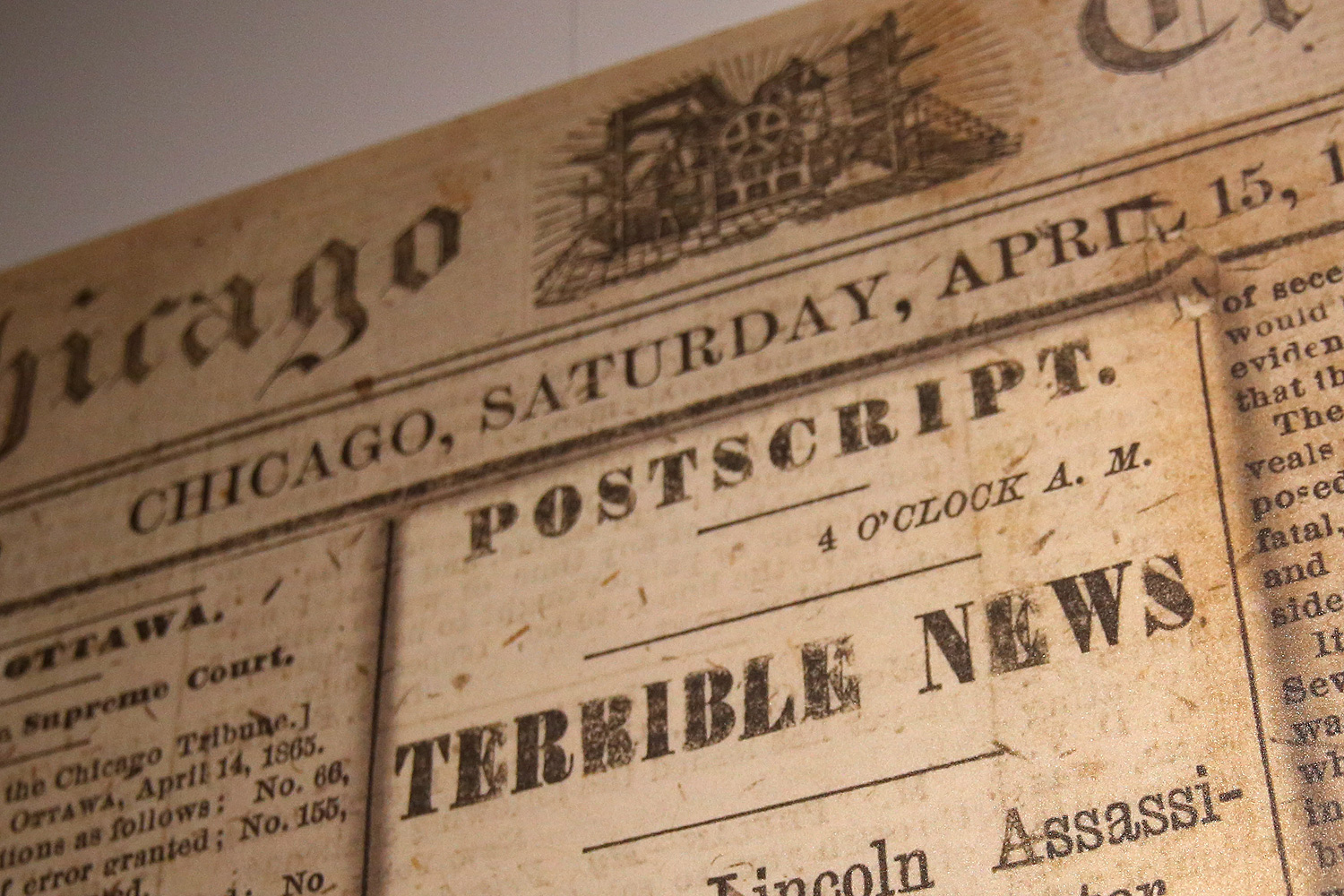Last week the Online News Association came to Chicago, and there was some chatter about the continued decline of print as it relates to the internet, generally identified as the culprit in the industry's downward spiral.
Something or the other got me thinking back to reading Matthew Gentzkow, the University of Chicago economist whom I interviewed after he won the Clark medal not long ago. Much of Gentzkow's work is on the economics and ideology of media, and part of the reason he won the Clark medal is his use of newly available data and technology to interrogate the long history of the media, especially newspapers. (Though Gentzkow, having received an award for as the best under-40 economist, is himself worried about the kids and their even newer technology outpacing him, just like the people in the industry he studies.)
And in a 2013 paper about the economics of print journalism versus online journalism, Gentzkow points out that newspapers have been in decline for way longer than the internet has been a popular source of information:
Contrary to most popular accounts, the growth of the Internet has not obviously caused a large decline in newspaper readership. Readership has fallen steadily since the Internet was introduced in the mid-1990s, but it had been falling at almost the same rate since 1980, and the small acceleration of this trend accounts for a drop in readership of only about 10 percent. This is consistent with more systematic evidence in Gentzkow (2007) and Liebowitz and Zentner (2012), suggesting that online-offline substitution is relatively limited, as well as survey evidence showing that the Internet currently accounts for less than 10 percent of total time spent consuming news (Edmonds 2013).
Granted, that's a decline on the audience's end, not on the advertiser's end. "A key component is the large drop in classified advertising revenue, which seems clearly related to competition from Craigslist and other online competitors," Gentzkow writes.
You can see the difference in four charts from Gentzkow's paper:

How much people are reading newspapers keeps up a steady, gradual decline from 1980 on as cable vastly increased its reach. It reminds me of the work political scientists have done on political polarization: before the broad acceptance of cable, many more casual viewers consumed the news because there wasn't much else on. Cable didn't necessarily polarize viewers by offering them ideologically-oriented news channels, it removed the ambivalent middle by giving them lots of other things to watch.
But ad revenue per hour didn't fall below 1980 levels until late last decade; it didn't even start declining until 2000. It wasn't until later that the business end began to decline substantially:

The time spent reading newspapers declined about 14 percent over that fairly short period (it declined slightly for online newspapers as well). The advertising revenue per hour of reading fell by about 44 percent.
The impact of the internet on revenues seems substantial. The impact on readership, not as much. People have been worried about declining newspaper circulation since before most ONA attendees were alive, as Philip Meyer wrote back in 1995:
The readership decline was first taken seriously in the late 1960s, when new information sources began to compete successfully for the time of the traditional newspaper reader. Competition spawned by technology began long before talk of the electronic information highway. Cheap computer typesetting and offset printing led to the explosive growth of specialized print products that could target desired audiences for advertisers. Low postal rates combined with cheap printing and computerized mailing lists spurred the growth of direct mail advertising. In short, the owners of the traditional toll road have been in trouble for some time now, and they know it.
1995 happened to be the first time I did a newspaper internship. One of the first things I learned was that the paper had a 20% profit margin, which was good but not even great for the industry. If that sounds insane, it sort of is; as Meyer pointed out, it's a luxury-item profit margin. Or a monopoly-product margin, but that monopoly was already slipping away.
In turnover, newspapers are more like supermarkets than yacht dealers. Their product has a one-day shelf life. Consumers and advertisers alike have to pay for a new version every day if they want to stay current. Absent a monopoly, newspaper margins would be at the low end. But because they own the bottleneck, the opposite is true. Before technology began to create alternate toll routes, a monopoly newspaper in a medium-size market could command a margin of 20 to 40 percent.
High profit margins combined with increasing revenues in a bubble economy led to massive debt acquisitions despite the ongoing decline of newspapers' circulation:
Prior to the recession, credit availability was virtually unlimited. Lenders were aggressive in lending to consumers and businesses. Newspaper publishing, as well as other traditional media sectors, were widely sought after by lenders because of their ability to generate robust cash flow margins. It was not unusual for lenders on traditional senior loans to lend up to 5 times EBITDA (earnings before interest taxes depreciation and amortization), the primary standard of measuring cash flow. Many banks and finance companies had dedicated media practices that actively competed for newspaper industry business.
But even before that round of acquisitions, management boosted profit margins at the expense of the product. And some of those revenue gains were produced by raising rates even as circulation and the actual amount of advertising in newspapers declined: "Newspapers used their leverage over advertisers by raising rates without building circulation. In fact, at many newspapers, circulation was intentionally cut as the managers streamlined costs by eliminating those readers who were less attractive to advertisers. " In that period, around the 1990s, is when Jack Shafer places the popping of the newspaper bubble.
In short, the role of the internet in the decline of newspapers is probably exaggerated. It doesn't seem to have hastened the decline of readership. (One of my favorite theories is that American time-use has changed; with longer workdays and more women in the workforce, there's just not as much free time, favoring multitasking-friendly news sources.) It did cut into revenues, but that had been predicted—that days of 20-40 percent profit margins would, eventually disappear. As online news begins to pick up the pieces, it's worth considering that it didn't do the breaking.




